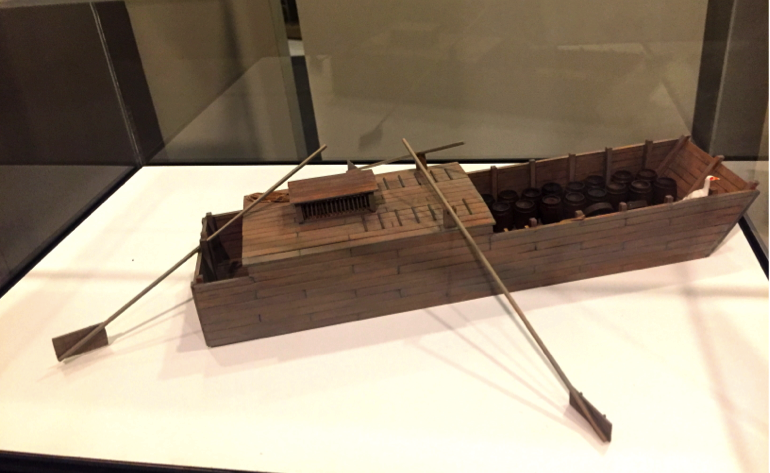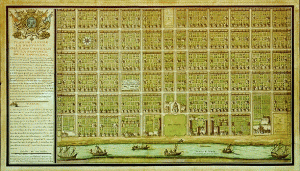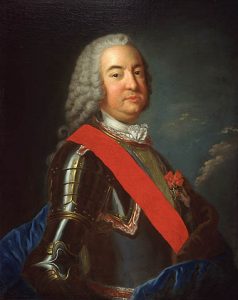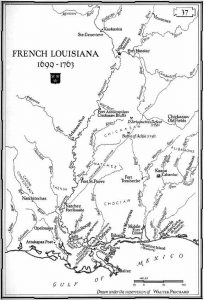New Orleans
![]()
![]()
Jean-Baptiste Lapaise de Védrines arrived at La Balize near New Orleans from France aboard the royal ship La Charente with newly-appointed Governor Vaudreuil on May 8, 1743. He was a lieutenant in the garrison of French Marines stationed in New Orleans, where he remained until he was sent to Ft. Chartres in IL in the spring of 1751.
![]()
An interesting description of the city of New Orleans was given by a fellow Officer of the French Marines, Jean-Benard Bossu (1720-1792), who arrived in New Orleans about the same time Jean Baptiste Lapaise de Védrines was leaving. It gives an indication of the life of the city as it was when Jean Baptiste Lapaise de Védrines arrived and during the years he lived there:
“The city of New Orleans is situated on the banks of the Mississippi, one of the greatest rivers of the world, since it flows through more than twenty-four hundred miles of known country. Its pure and delicious waters serve a country of an hundred and twenty miles, in the middle of which are a number of homes which present a delightful spectacle on both banks. The owners of these homes enjoy in abundance all the pleasures of the chase, of fishing, and of all the other delicacies of life.
In New Orleans the streets are well arranged and today this city is greater and more thickly populated than it has ever been. Its inhabitants are of four sorts, Europeans, Americans, Africans or negroes, and Mongrels. The Mongrels are those who were born of Europeans and of those natives of the country whom we call savages.
They describe Creoles as those who were born of a Frenchman and a Frenchwoman, or a Frenchman and a European.
The Creoles are in general very brave, grand, and haughty. They are disposed towards the cultivation of the arts and sciences, but as they do not have the opportunity of following the teachings of good masters here, the rich and well meaning parents do not hesitate to send their children to France as the first school of everything in the world. They do this particularly in order that the respective sexes might properly learn their positions in the world.
New Orleans and Mobile are the only cities where they do not speak in patois. Here the French that is spoken is correct. The negroes are brought from Africa. They are used in cultivating the soil, which is excellent for the cultivation of indigo, tobacco, rice, maize, and of sic sugar cane, for all of which there are very well managed plantations.
The Capuchins were the first priests to arrive in New Orleans. They came as missionaries in 1723. Their superior was the first Curé of the Parish, and these good religious devoted themselves solely to the affairs of their ministry.
The Jesuits, two years later, established themselves in Louisiana; these splendid diplomats discovered the secret of exploiting the rich land of the colony, which they obtained through their political moves.
The Ursulines came about the same time as the Jesuits, or a little later. These pious women, whose zeal is assuredly most praiseworthy, devoted themselves to the education of the young girls. They also received the orphans into their community, and for this service the King gave them a pension of fifty crowns for each orphan. They were also in charge of the military hospital.
When the colony was established, a tribe known as the Chitimachas lived on a stream to the west of New Orleans, which bore their name.” (Travels through that part of North America formerly called Louisiana, Jean Benard Bossu, 1771, pp. 194-195)
Another possible insight into the life of Jean Baptiste Lapaise de Védrines in New Orleans, particularly during the reign of Governor Vaudreuil is given here:
“The administration of the Marquis of Vaudreuil was long and fondly remembered in LA, as an epoch of unusual brilliance. His administration was for LA, with regard to splendor, luxury, military display, and expenses of every kind, what the reign of Louis XIV had been for France. He was a man of patrician birth and high breeding, who liked to live in a manner. Remarkable for his personal grace and comeliness, he was fond of pomp, show and pleasure; surrounded by a host of brilliant officers, of whom he was the idol, he loved to keep up a miniature court, in distant imitation of that of Versailles; and long after he had departed, old people were fond of talking of the exquisitely refined manners, the magnificent balls, the splendidly uniformed troops, the high-born young officers, and many other unparalleled things they had seen in the days of the Great Marquis.” (Louisiana; Its Colonial History and Romance, Gayerré, Charles Étienne Arthur, 1805-1895, pp. 237-238)
![]()
![]()
 Convoys between New Orleans and Illinois were central to the life of the colony of LA. They ran twice a year, once in the late fall and once in the spring. It involved a long series of flat boats (bateaux) filled with the harvest of wheat and other goods for trade and sale, some weighing 70 or even 100 tons, along with a fleet of pirogues. For much of the French period, convoys had to be heavily guarded by a small company of soldiers and under strict command of a trusted officer.
Convoys between New Orleans and Illinois were central to the life of the colony of LA. They ran twice a year, once in the late fall and once in the spring. It involved a long series of flat boats (bateaux) filled with the harvest of wheat and other goods for trade and sale, some weighing 70 or even 100 tons, along with a fleet of pirogues. For much of the French period, convoys had to be heavily guarded by a small company of soldiers and under strict command of a trusted officer.
This is a model of a flatboat at the Arkansas Post museum



